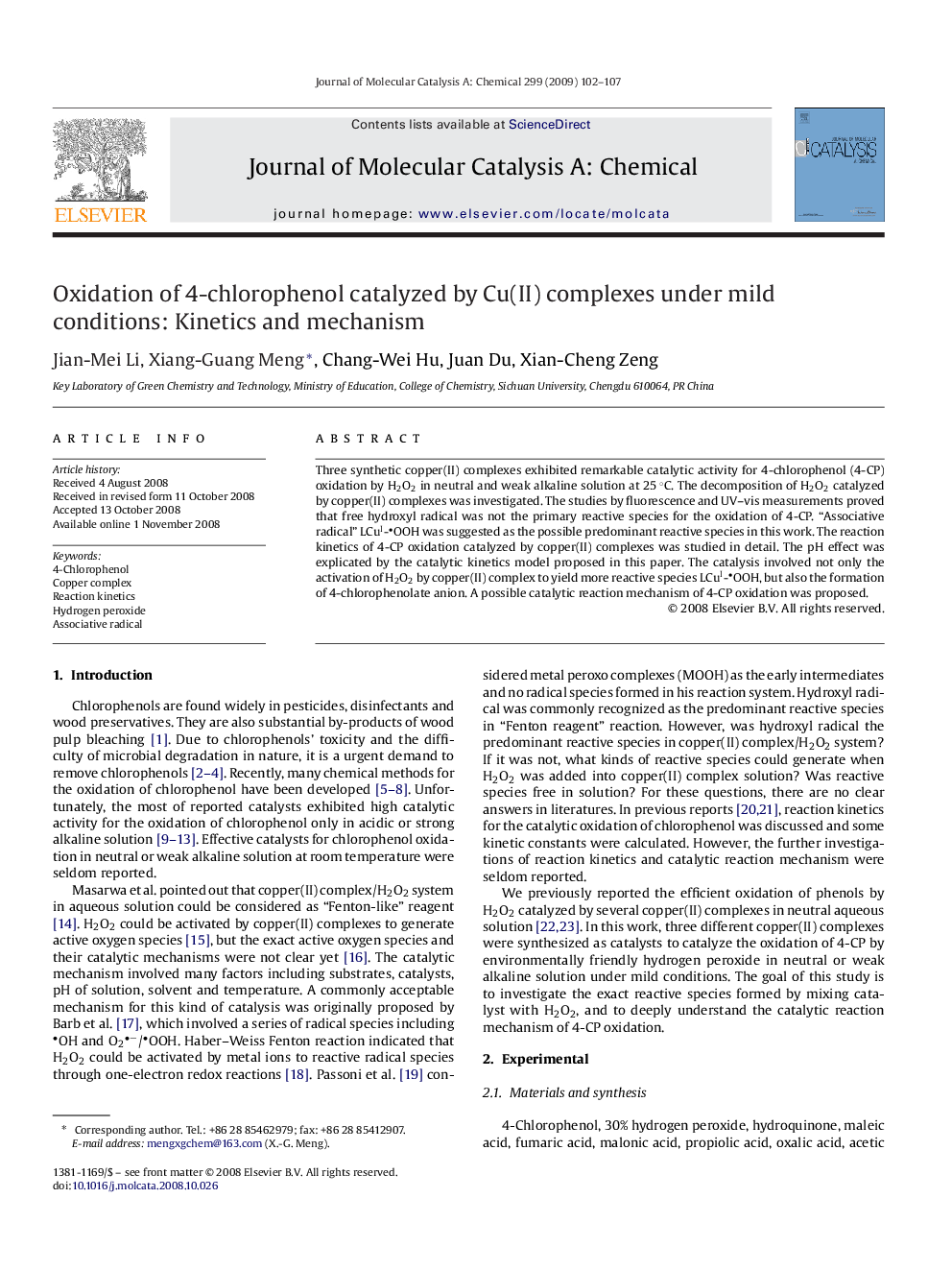| Article ID | Journal | Published Year | Pages | File Type |
|---|---|---|---|---|
| 67197 | Journal of Molecular Catalysis A: Chemical | 2009 | 6 Pages |
Three synthetic copper(II) complexes exhibited remarkable catalytic activity for 4-chlorophenol (4-CP) oxidation by H2O2 in neutral and weak alkaline solution at 25 °C. The decomposition of H2O2 catalyzed by copper(II) complexes was investigated. The studies by fluorescence and UV–vis measurements proved that free hydroxyl radical was not the primary reactive species for the oxidation of 4-CP. “Associative radical” LCuI-OOH was suggested as the possible predominant reactive species in this work. The reaction kinetics of 4-CP oxidation catalyzed by copper(II) complexes was studied in detail. The pH effect was explicated by the catalytic kinetics model proposed in this paper. The catalysis involved not only the activation of H2O2 by copper(II) complex to yield more reactive species LCuI-OOH, but also the formation of 4-chlorophenolate anion. A possible catalytic reaction mechanism of 4-CP oxidation was proposed.
Graphical abstractThree synthesized copper(II) complexes exhibited remarkable catalytic activity for 4-CP oxidation by H2O2 under mild conditions. Fluorescence and UV–vis spectrophotometers tests proved that 4-CP oxidation was not predominated by free hydroxyl radical. LCuI-OOH (M*) was the possible predominant reactive species. Copper(II) complex can not only activate H2O2 but also decrease the pKa of 4-CP to form active intermediate M*S−.Figure optionsDownload full-size imageDownload as PowerPoint slide
